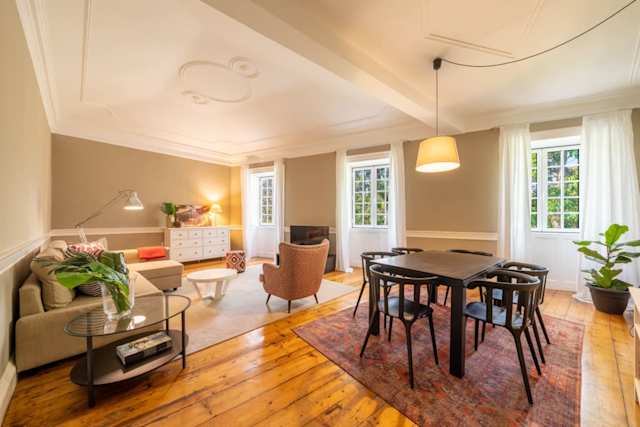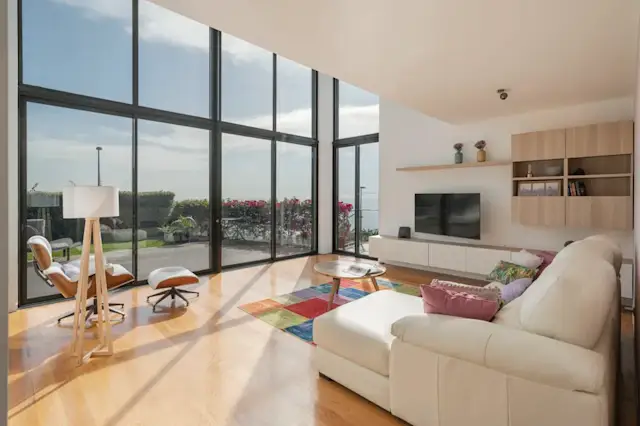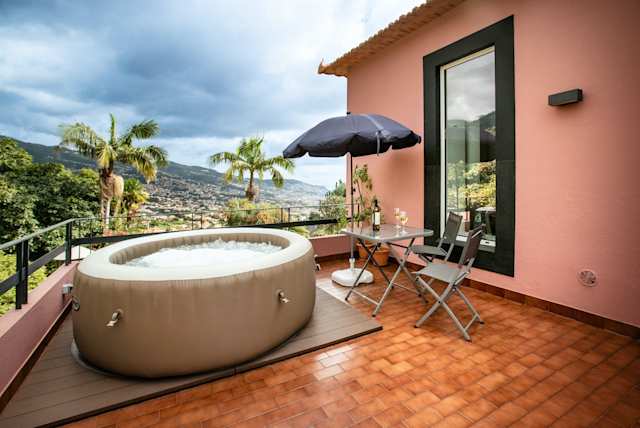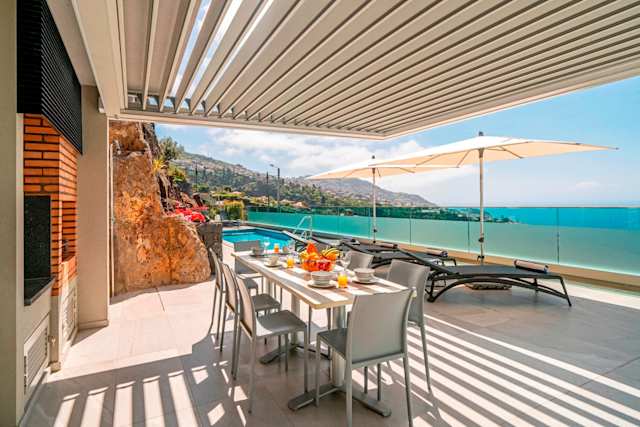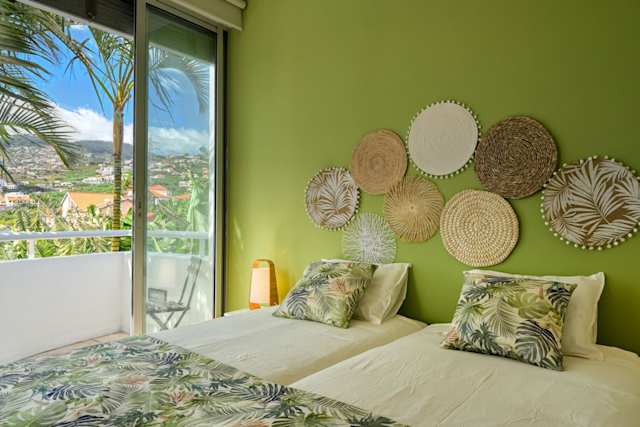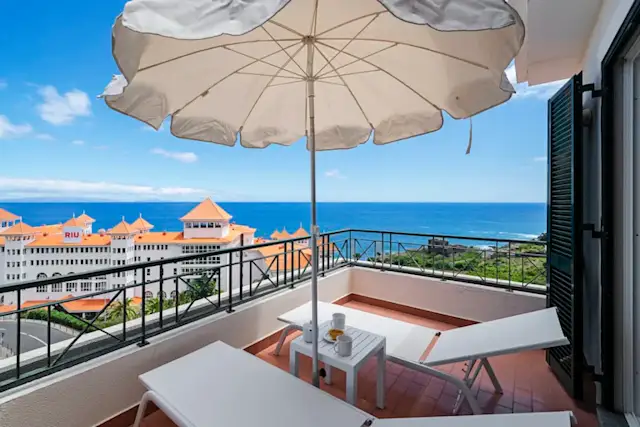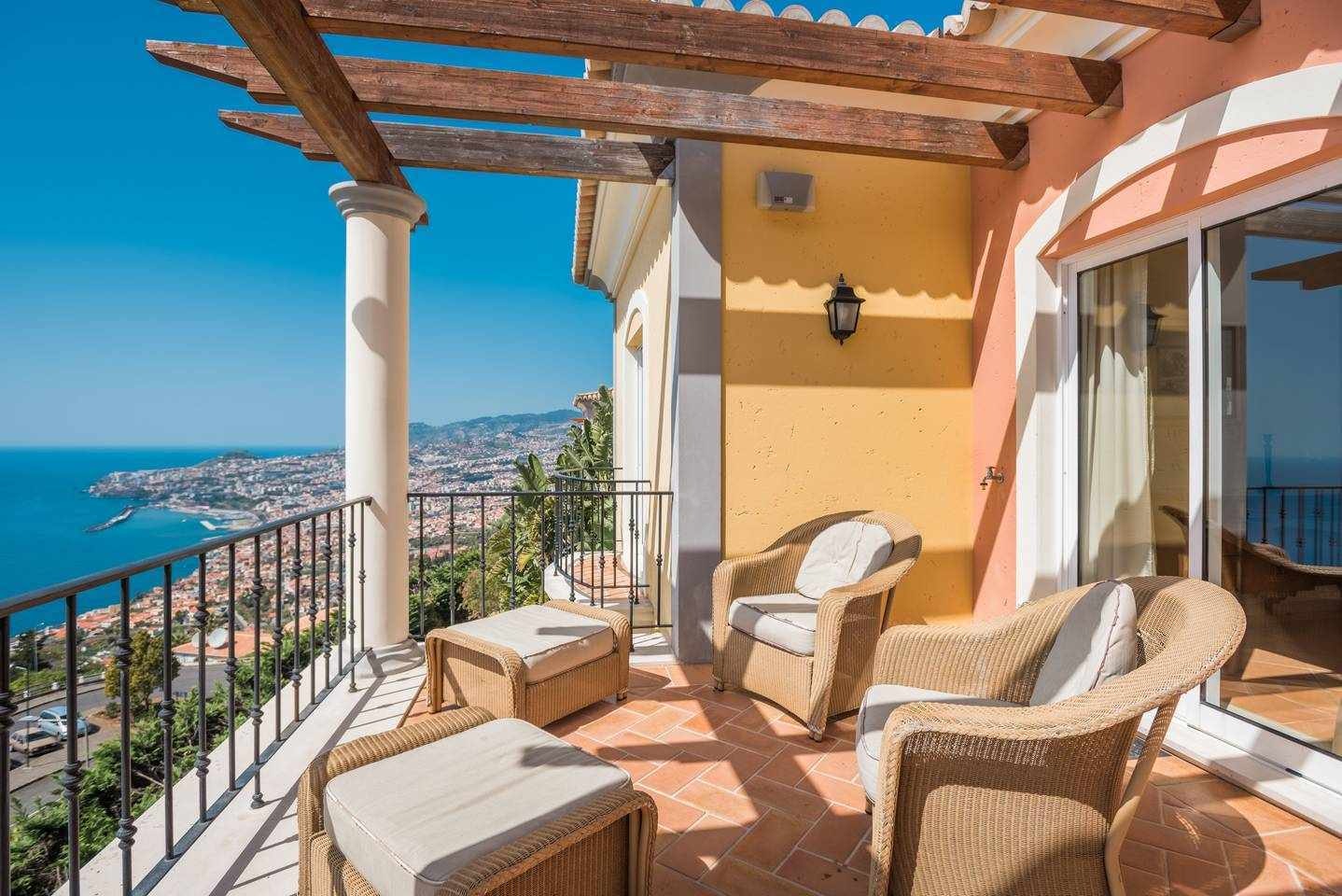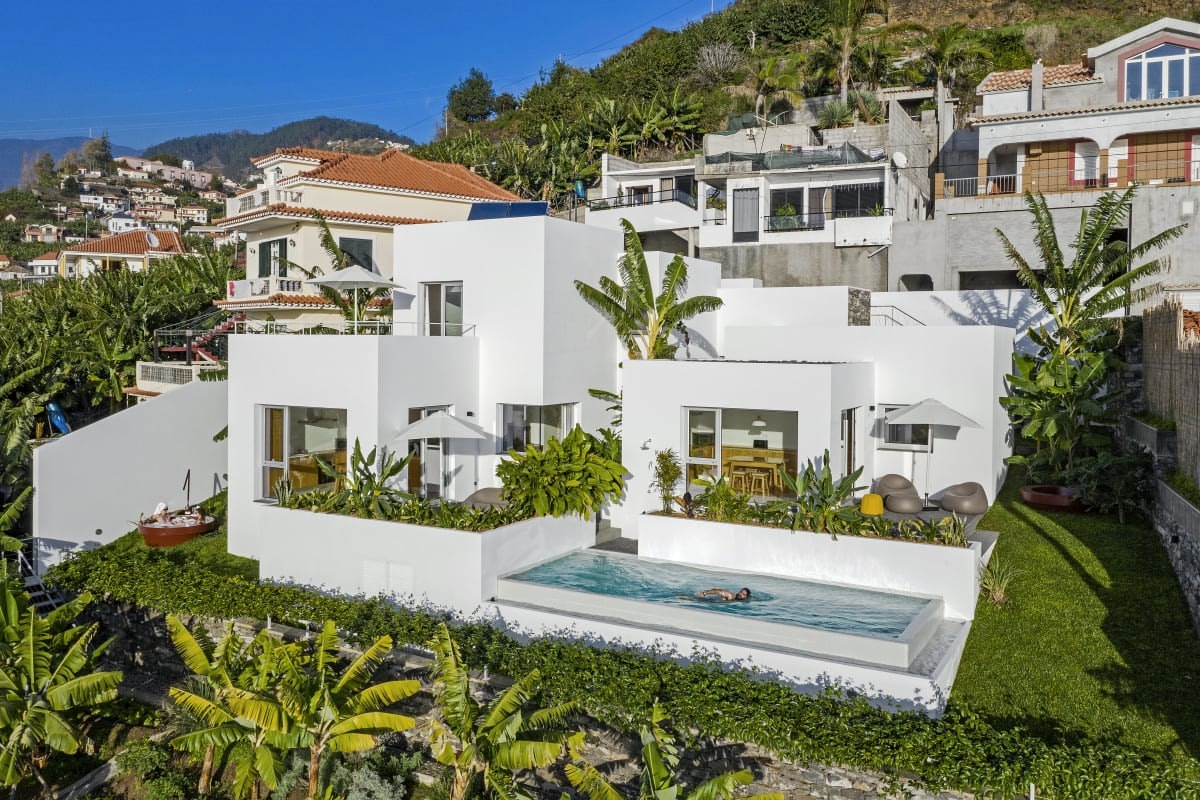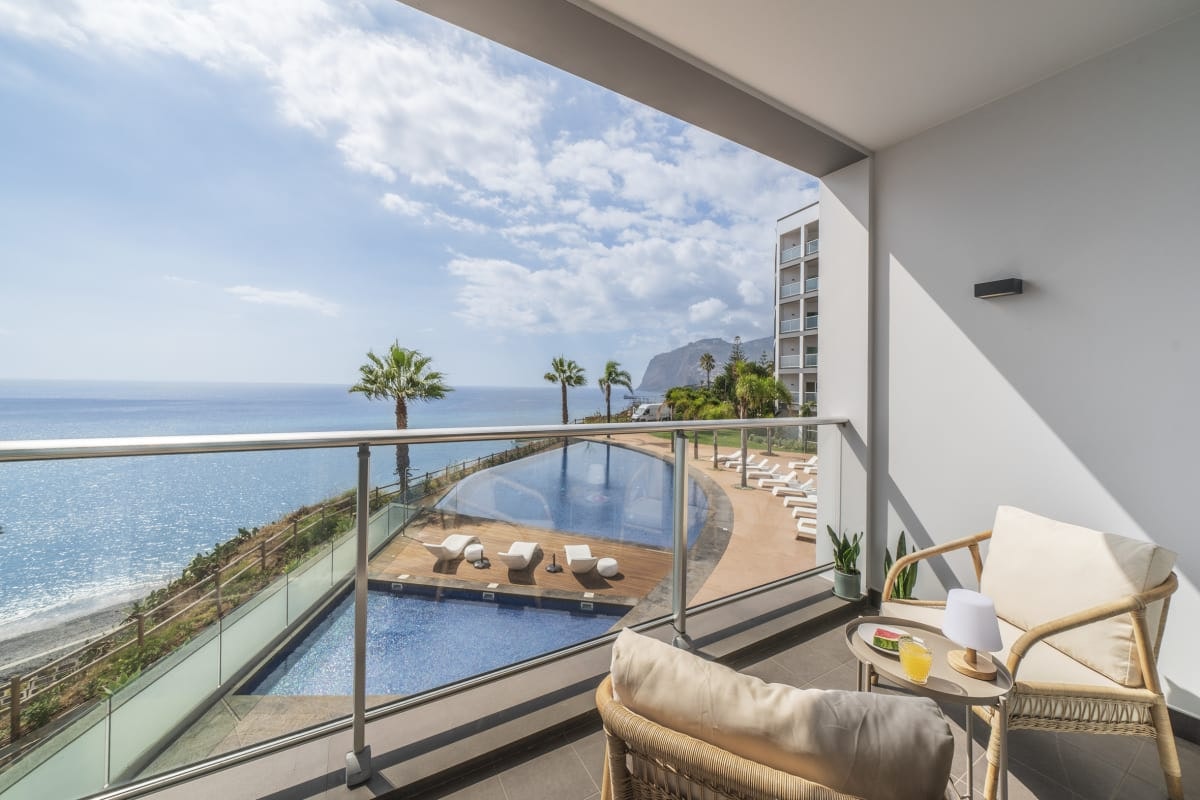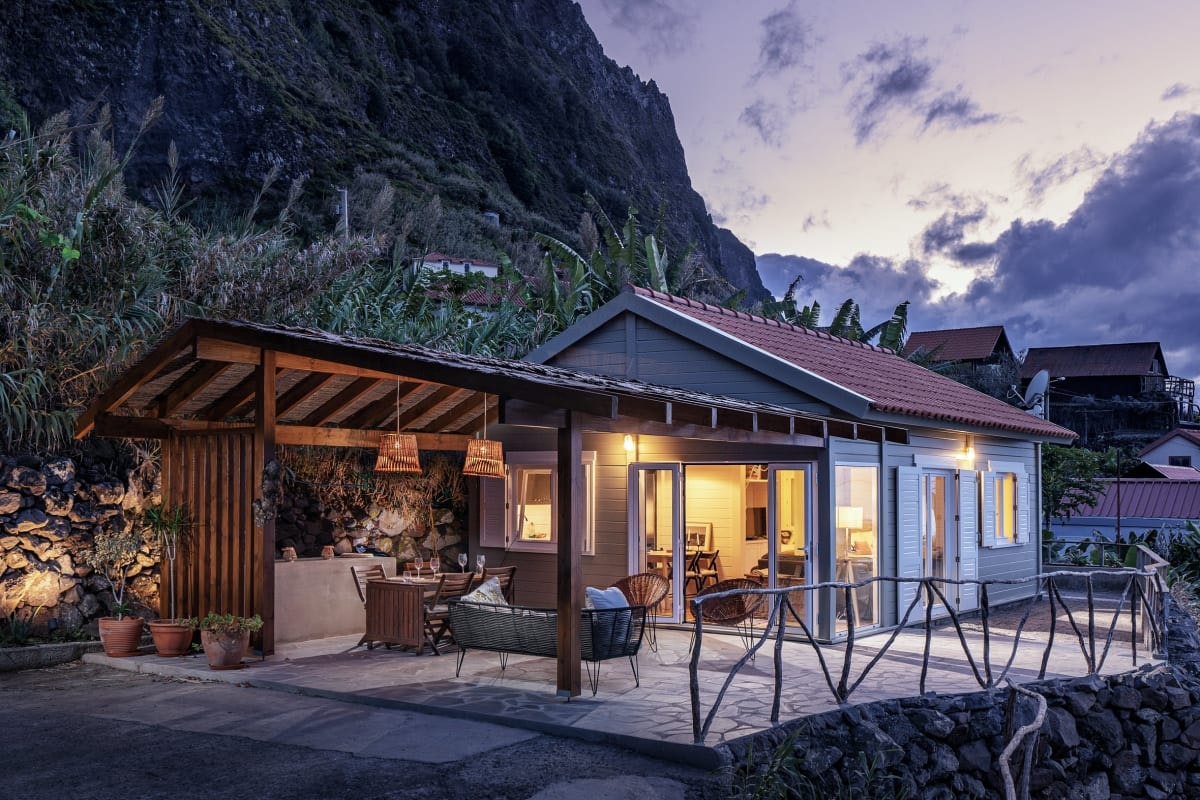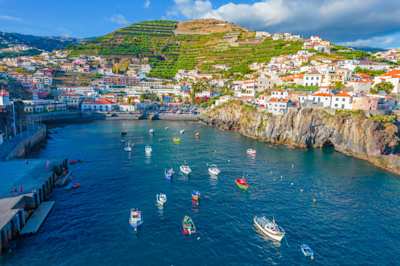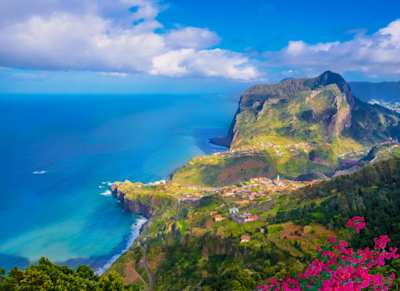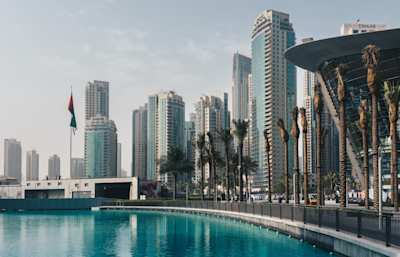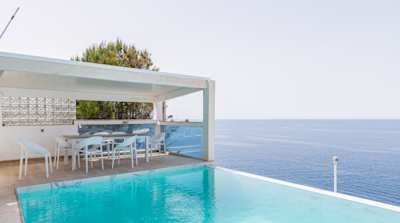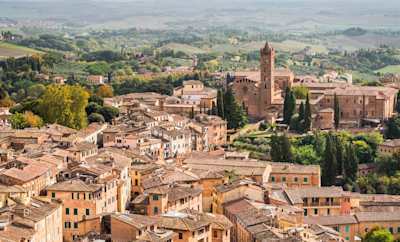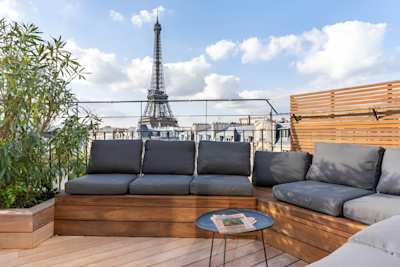Fabulous Funchal: Where to Stay For a Break in Madeira’s Green Capital
From fishing towns to rural charm and historic neighbourhoods, Funchal has a great deal to offer
~
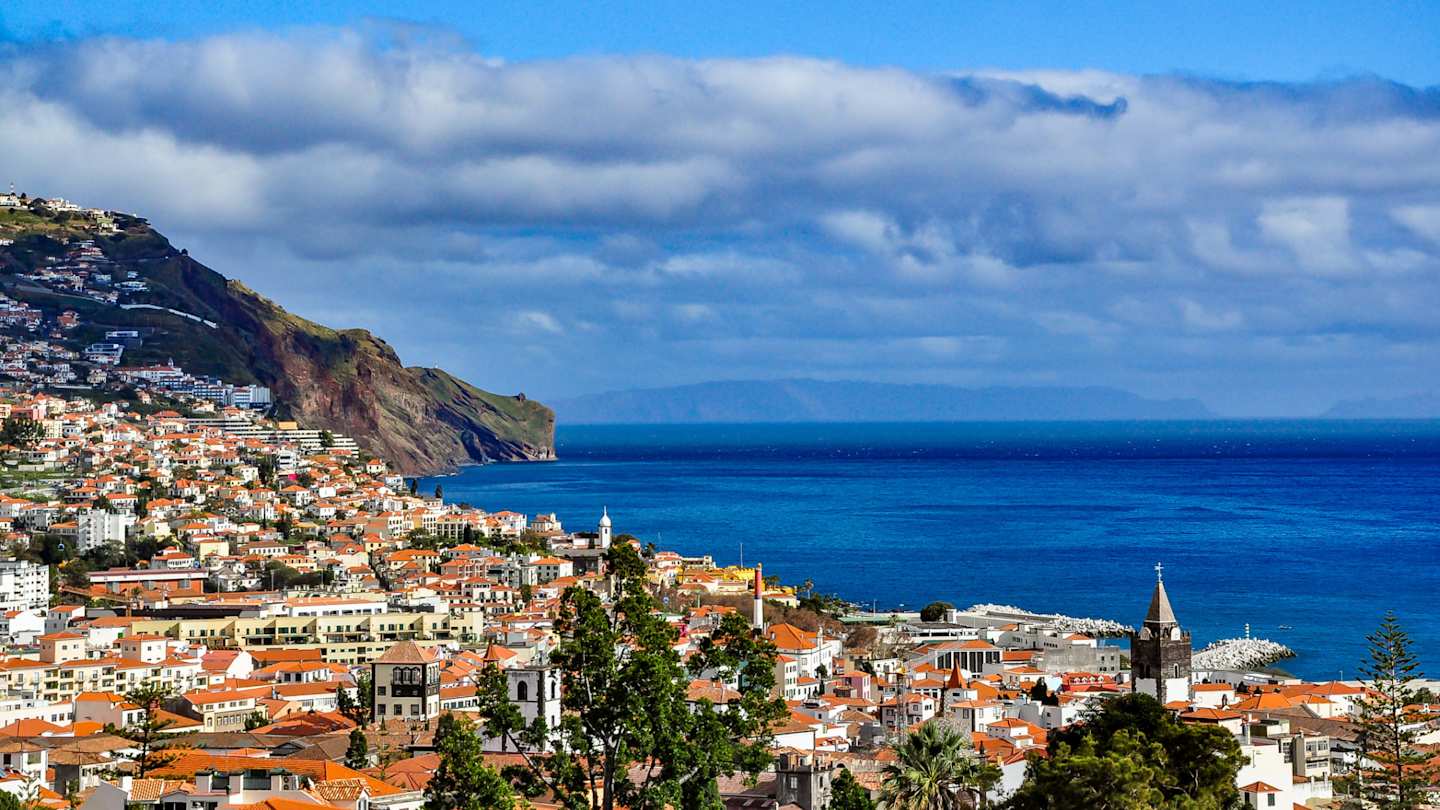
So you’re thinking of a holiday in Madeira? Great choice. This green haven of an island in the Atlantic Ocean is a fantastic destination, where you can spend long days lounging on the beaches, hiking its rugged interior or sightseeing in the charming capital of Funchal. This city makes an excellent base since it has something for every kind of traveller. If you’re wondering where to stay in Funchal, our travel experts at Plum Guide have all the inside knowledge you need. To help you plan the perfect trip, we’ve put together the best areas of the city to stay in, so that you don’t miss out on anything it has to offer.
Old Town
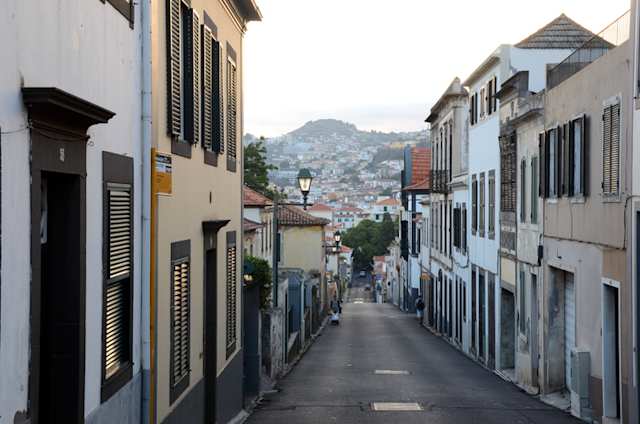
Historic buildings in the streets of Funchal, Madeira
For those searching for somewhere to stay in Funchal with easy access to the city’s attractions, the Old Town – also known as Zona Velha – is your best option. This historic district is made up of ancient streets and traditional Madeiran buildings, many of which date back to the 15th century. One of the highlights of the Old Town is the Sé Cathedral, a magnificent building with a striking Gothic facade and gilded altarpiece. Popular with both worshippers and tourists, this stunning place is a must-visit for anyone interested in architecture. Another attraction worth visiting is the Forte São Tiago, a 17th-century fortress now home to the impressive Museum of Contemporary Art.
The Old Town is a great place to shop, and you’ll find all kinds of stores and boutiques along Rua do Aljube, Rua da Carreira and Rua Dr. Fernao Ornelas. To soak up the local atmosphere, there’s no better place than Mercado dos Lavradores, a bustling farmers market where you’ll find everything from fresh produce and flowers to crafts and souvenirs. Come hungry, as you’ll want to sample delicious Madeiran treats like the Poncha cocktail and honey cake.
São Martinho
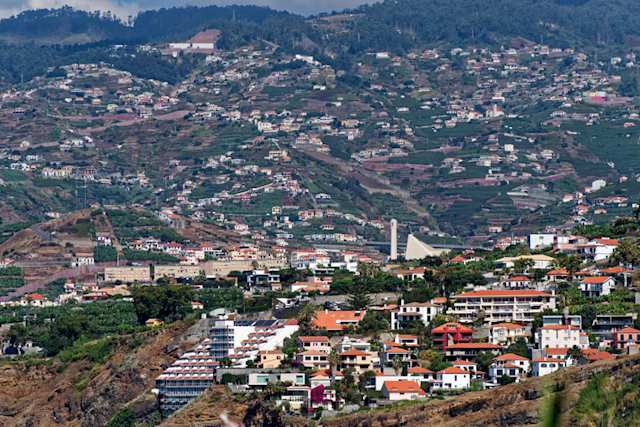
View of São Martinho in Funchal, Madeira
One of the most populated parts of the city, São Martinho is where most of the hotels and attractions are located. Its main draw is the coastline, so this is the best place to stay in Funchal if you want to spend your days on the beach. There are several to choose from, such as Praia Formosa, the largest beach in Madeira, and Praia do Gorgulho with its grey pebbles and crystal-clear waters.
Alongside its gorgeous beaches, São Martinho offers several cultural and historical attractions for when you need a change of scenery. The 15th-century São Martinho Church is perched atop a steep hill, but it’s worth the climb for the panoramic views of Funchal and the coastline. The church’s interiors are equally remarkable, with intricate frescoes and an ornate Baroque altar. If you like picturesque gardens, visit the Quinta Vigia, the official residence of the President of the Regional Government of Madeira. Its gardens are open to the public and are packed with shaded trees, indigenous flora and colourful birds, as well as breathtaking views over the harbour.
Come afternoon, head down to the Lido Promenade. A lovely place for a stroll, it's popular with both locals and tourists who come here to relax. Lined with palm trees and lush gardens, this is the best spot to grab a drink and enjoy sunset views.
Santo Antônio
When it comes to where to stay in Funchal for rural charm and natural beauty, the neighbourhood of Santo Antônio is a perfect choice. Extending into the mountainous interior of the island, the area is surrounded by rolling hills, green forests, and fertile farmland where farmers grow fruits, vegetables and other crops that you can sample at the weekly farmers market. Given its natural surroundings, it comes as no surprise that Santo Antônio attracts keen hikers who make use of the many trails, including Levada do Norte and the Levada das 25 Fontes, both of which offer photogenic views of the island. For an easy viewpoint where you don’t have to climb, take the bus or drive up to Pico dos Barcelos for splendid views of Funchal at 355 metres above sea level.
Santo Antônio is popular with football fans as Cristiano Ronaldo was born and raised here, and you can even visit his childhood home. If you’re not into football, there are plenty of other cultural attractions to enjoy, such as the 16th-century Church of Santo Antônio with its amazing Baroque architecture, and the 17th-century Solar do Ribeirinho, a former mansion now housing a museum of local history.
Monte
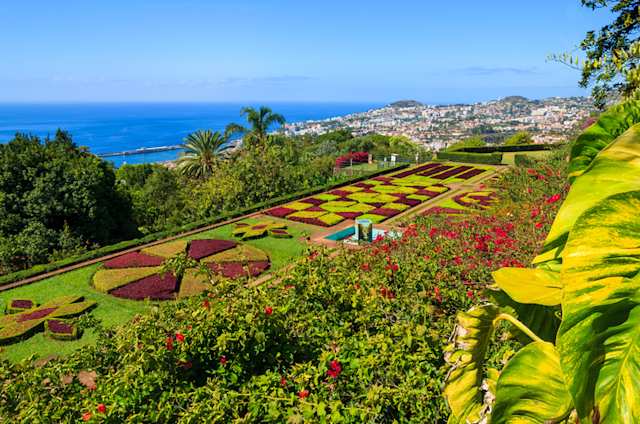
Monte palace tropical gardens with view of Funchal town, Madeira
One of the most popular areas to stay in Funchal is Monte. Perched high above the city, a cable car connects this neighbourhood to the Old Town, providing spectacular bird's-eye views on the ride up. Monte is a green and verdant area, with botanical gardens such as the Monte Palace Tropical Garden, a paradise of over 100,000 plant species. As well as winding paths leading through tropical plants and flowers, there are also wonderful 15th and 16th-century azulejos portraying scenes of important historical events. For more gardens, take a second cable car from Monte through the João Gomes Stream Valley up to the Madeira Botanical Garden. Set into the hillside above Funchal, the views from up here are second to none.
Another noteworthy attraction in Monte is Igreja do Monte. Built on the site of a 15th-century hermitage, this 18th-century church is one of the most famous religious landmarks in Madeira. A remarkable example of Baroque architecture, the church is famous for its magnificent altar and pipe organ, which is one of the largest in the whole of Portugal. If you’re lucky enough to visit in August, be sure to catch the church’s annual festival celebrating the Lady of Monte, the patron saint of Funchal. A lively procession takes place on the streets, ending with a dramatic fireworks display.
Camara de Lobos
If you’re the type of person who likes to spend the day exploring all the touristy offerings but prefers to come home to quieter surroundings, then Camara de Lobos is perfect for you. This quaint fishing town is just a fifteen-minute drive from Funchal, allowing you to get to the heart of the action in no time. As soon as you arrive in the town, you’re greeted by a dazzling bay overlooked by whitewashed houses and colourful fishing boats bobbing in the harbour. These traditional boats are called lapas, and their design dates back to the 19th century.
One of the most interesting things to do in town is visit the fisherman’s chapel dedicated to Saint Anthony. Decorated with paintings honouring to the saint, this is where angler's wives would pray for their husband's safety while they were out at sea.
Camara de Lobos is the ideal place to stay for outdoor lovers who can take on the many walking trails around the area. One of our favourites is the coastal walk to Praia Formosa, a photogenic cove where you can swim in the blue waters and take in the sweeping views. Other scenic viewpoints include Cabo Girão (the glass-bottomed skywalk is not for the faint-hearted), Fajã dos Padres, and Curral das Freiras.
Caniço
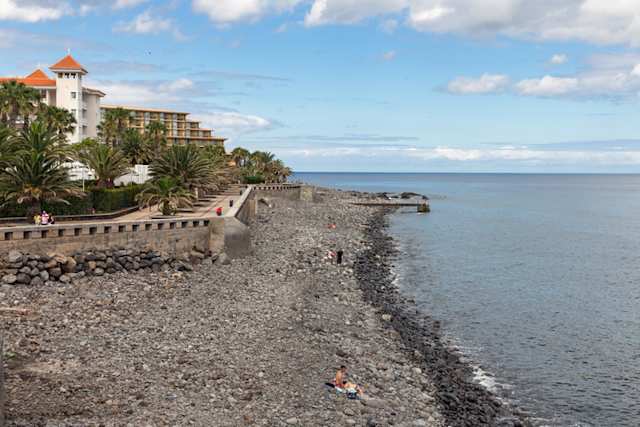
Beach near Caniço, Madeira
Less than a ten-minute drive from Funchal, Caniço is one of the loveliest towns to stay in. It offers a little bit of everything, including attractive beaches, scenic natural landscapes, and a pleasant climate. It’s where you’ll find the Garajau Partial Nature Reserve, where crystal-clear waters are home to rich marine life like turtles and tropical fish. There are plenty of opportunities to scuba dive, snorkel and kayak in the nature reserve, or take it easy and relax on Garajau Beach with its magnificent cliffs.
Those interested in religious history can visit the Matriz do Caniço Church, built with a combination of Baroque and Rococo styles. It’s just as beautiful inside, with white and gold decorations and paintings by Nicolau Ferreira. You’ll find that the town’s cultural heritage and traditions are very much alive here, and are celebrated with the annual Noites da Promenade do Caniço festival taking place at the start of September. The parade is the highlight of the festival, complete with traditional costumes and colourful floats accompanied by live music and dancing. There are plenty of ways to join in the festivities, whether it’s visiting local craft markets, participating in workshops or enjoying carnival games and rides.
